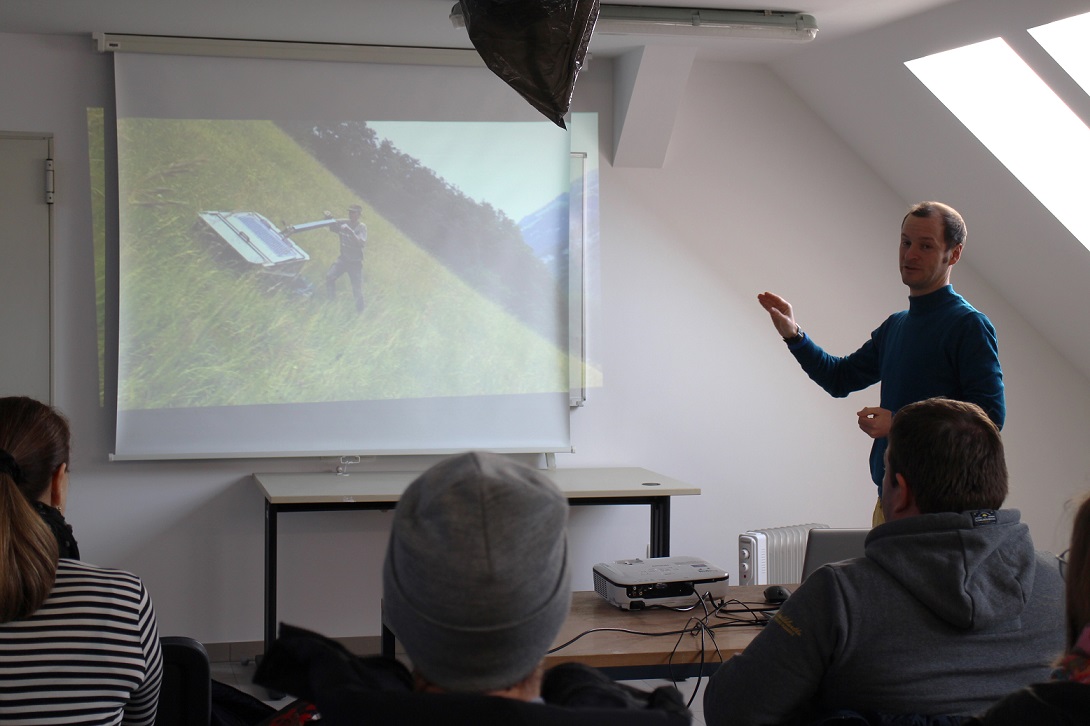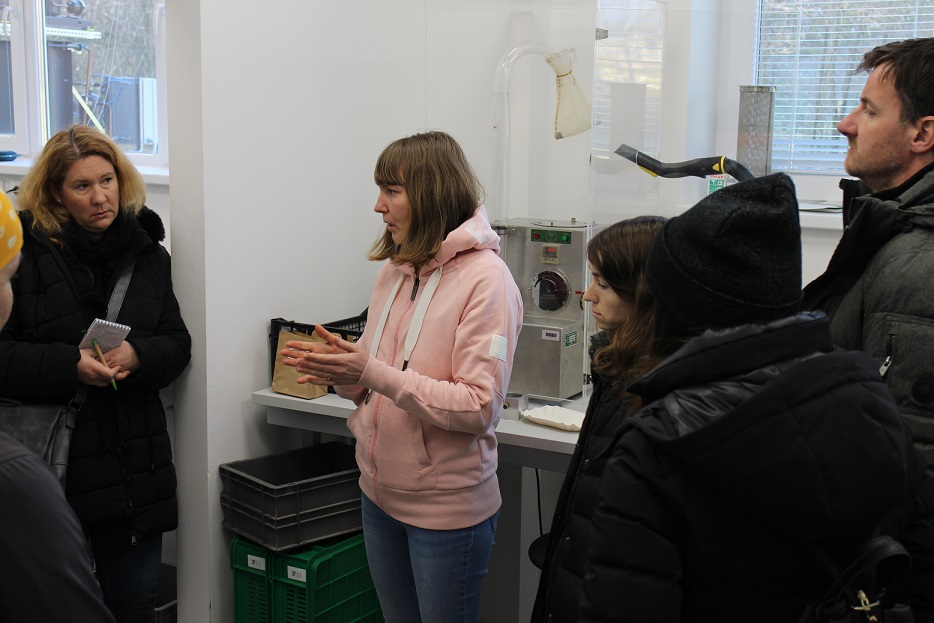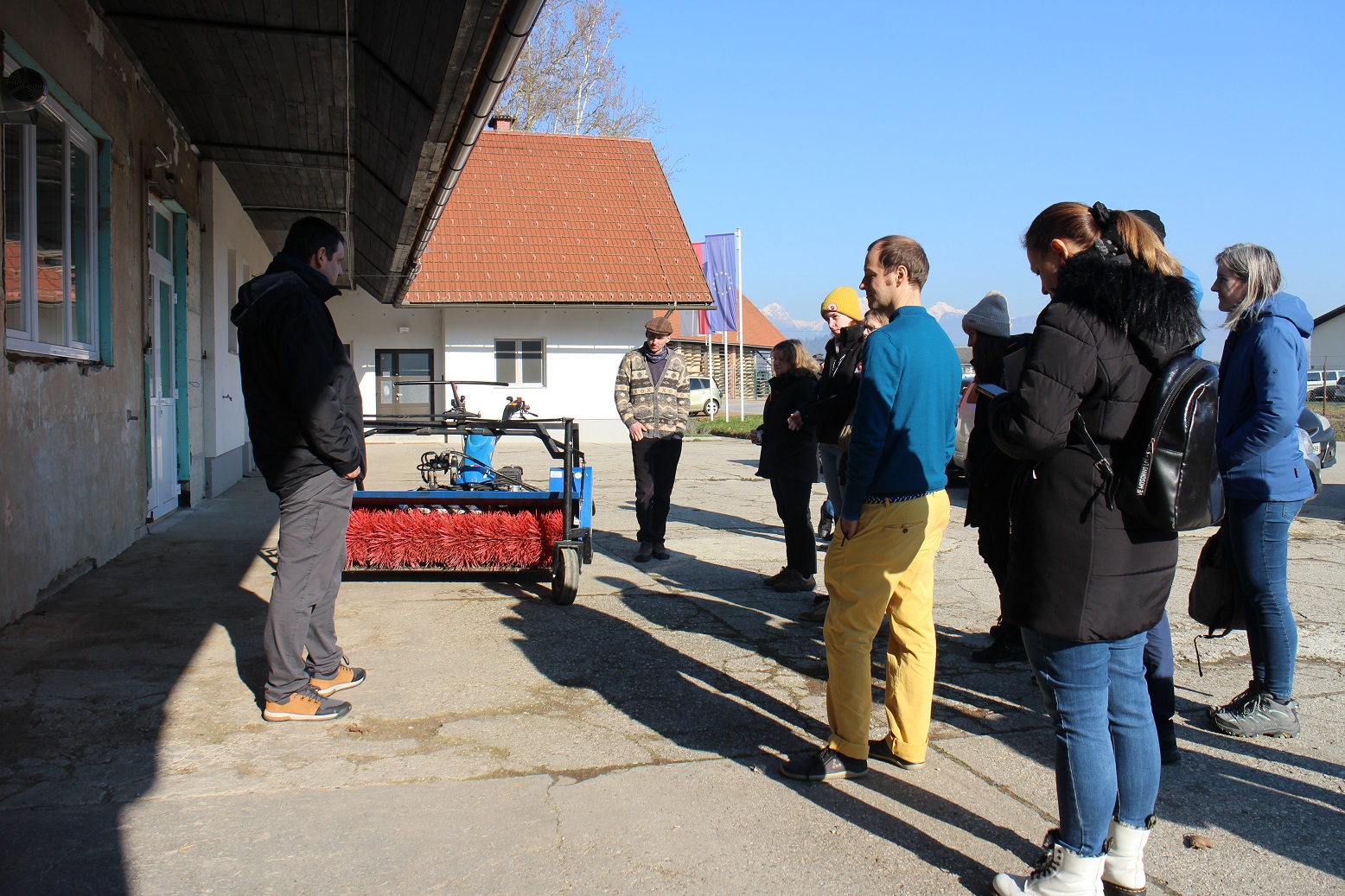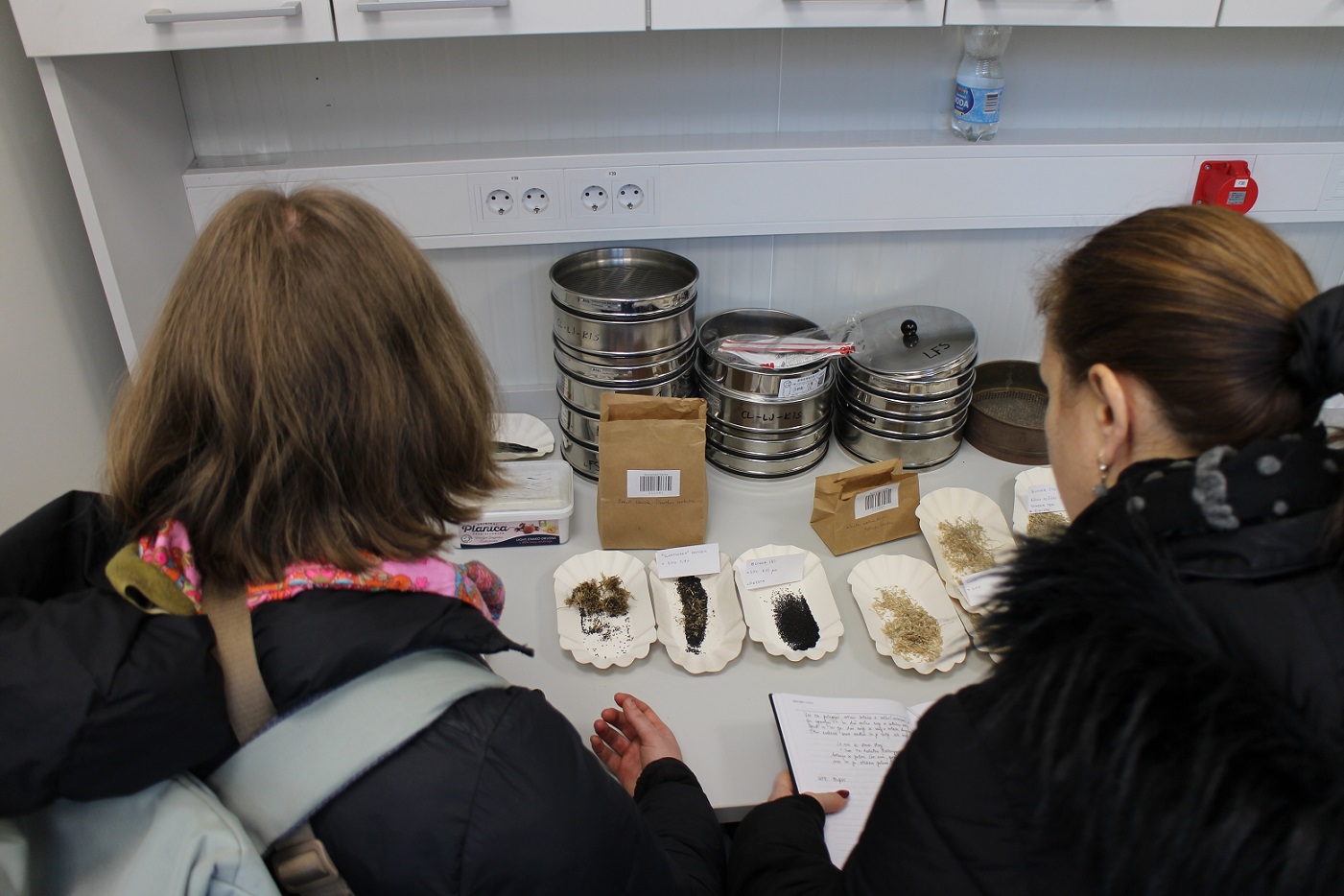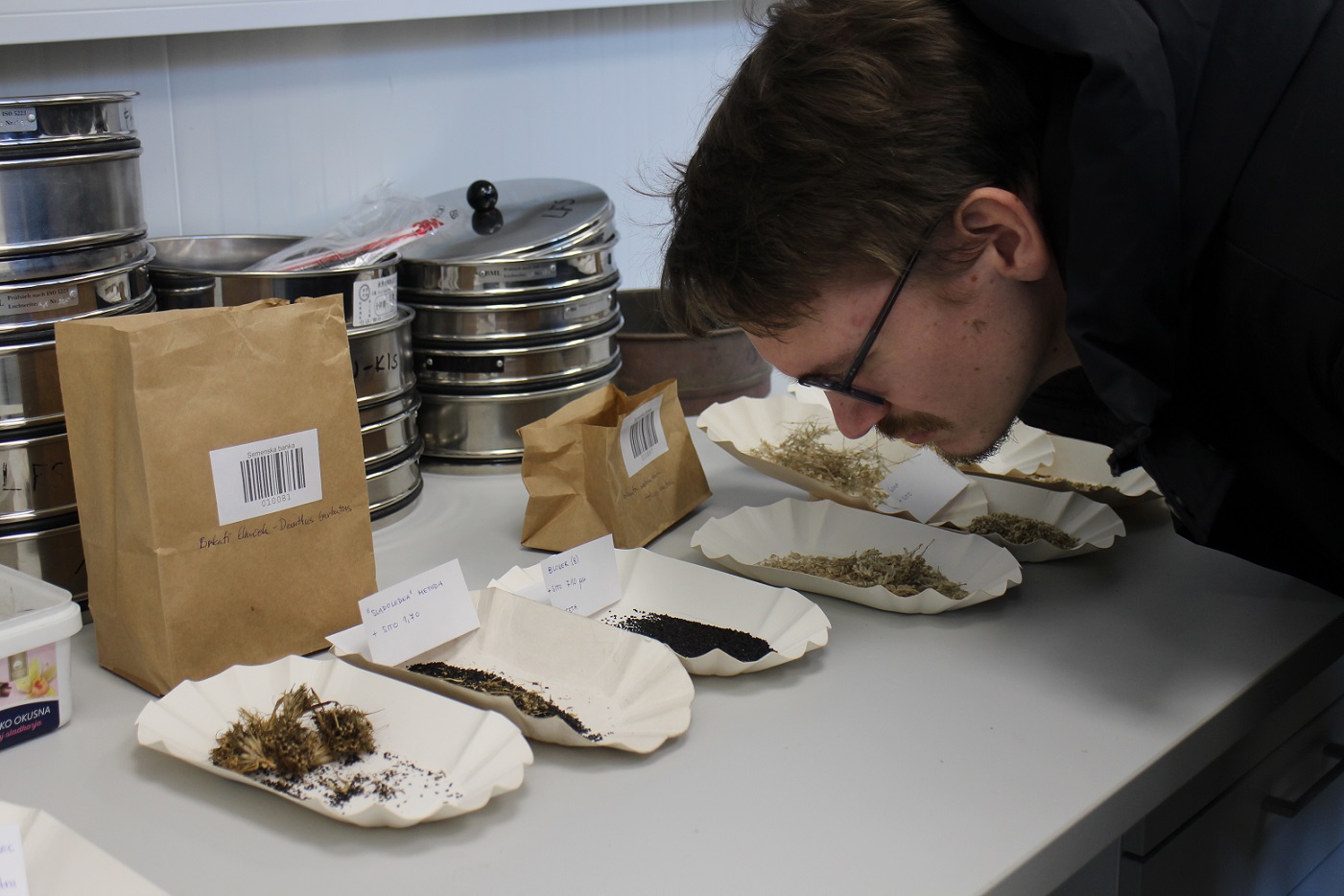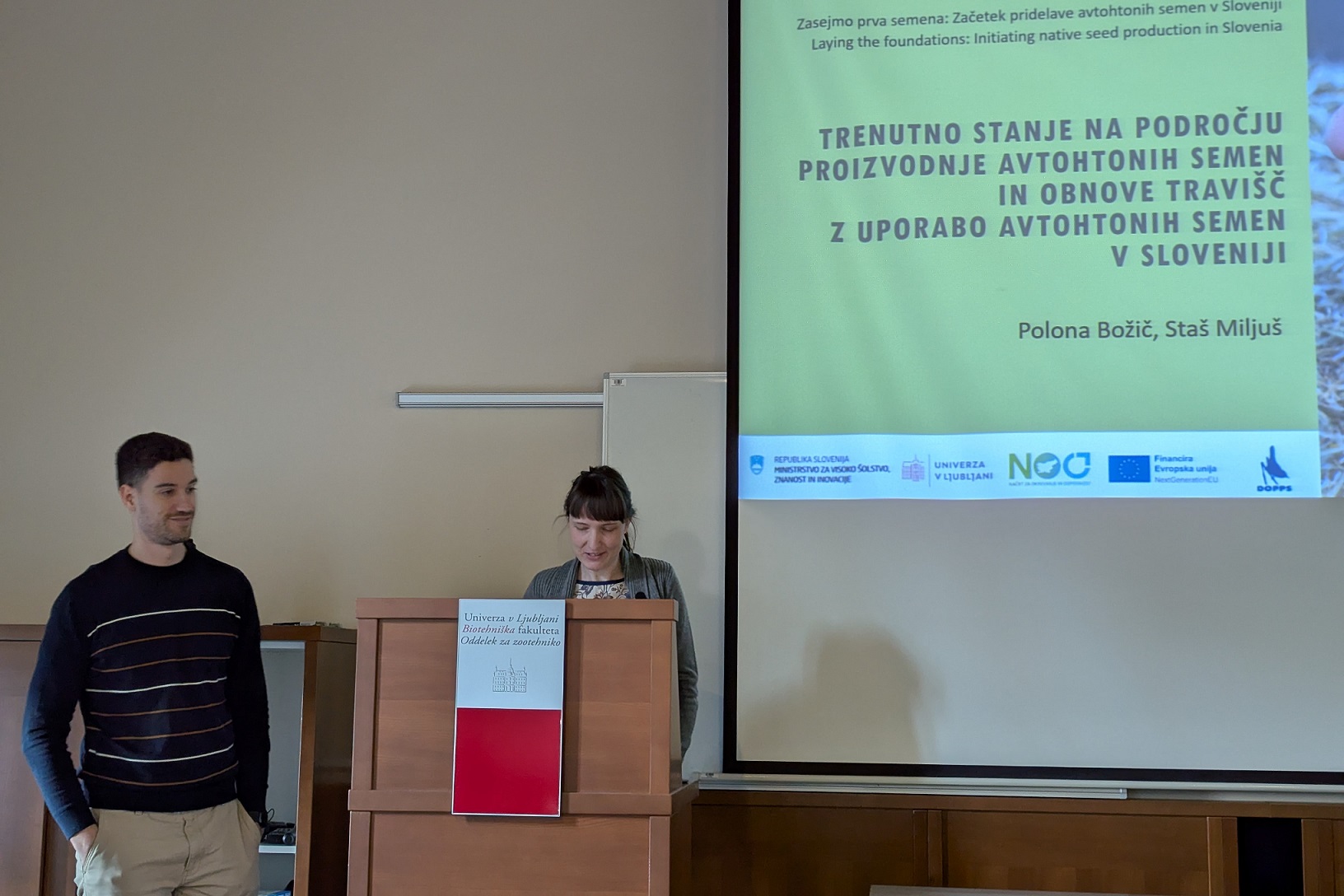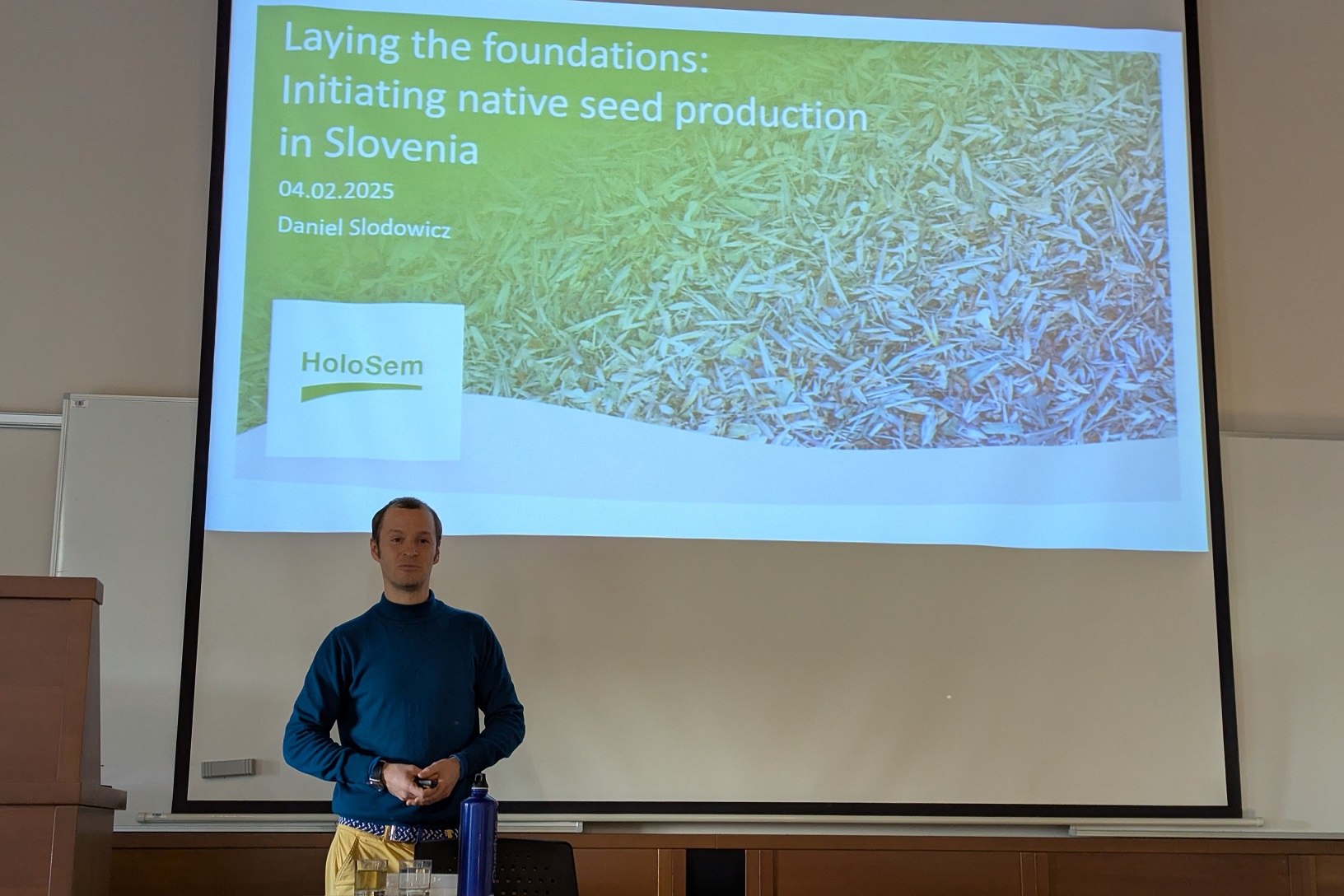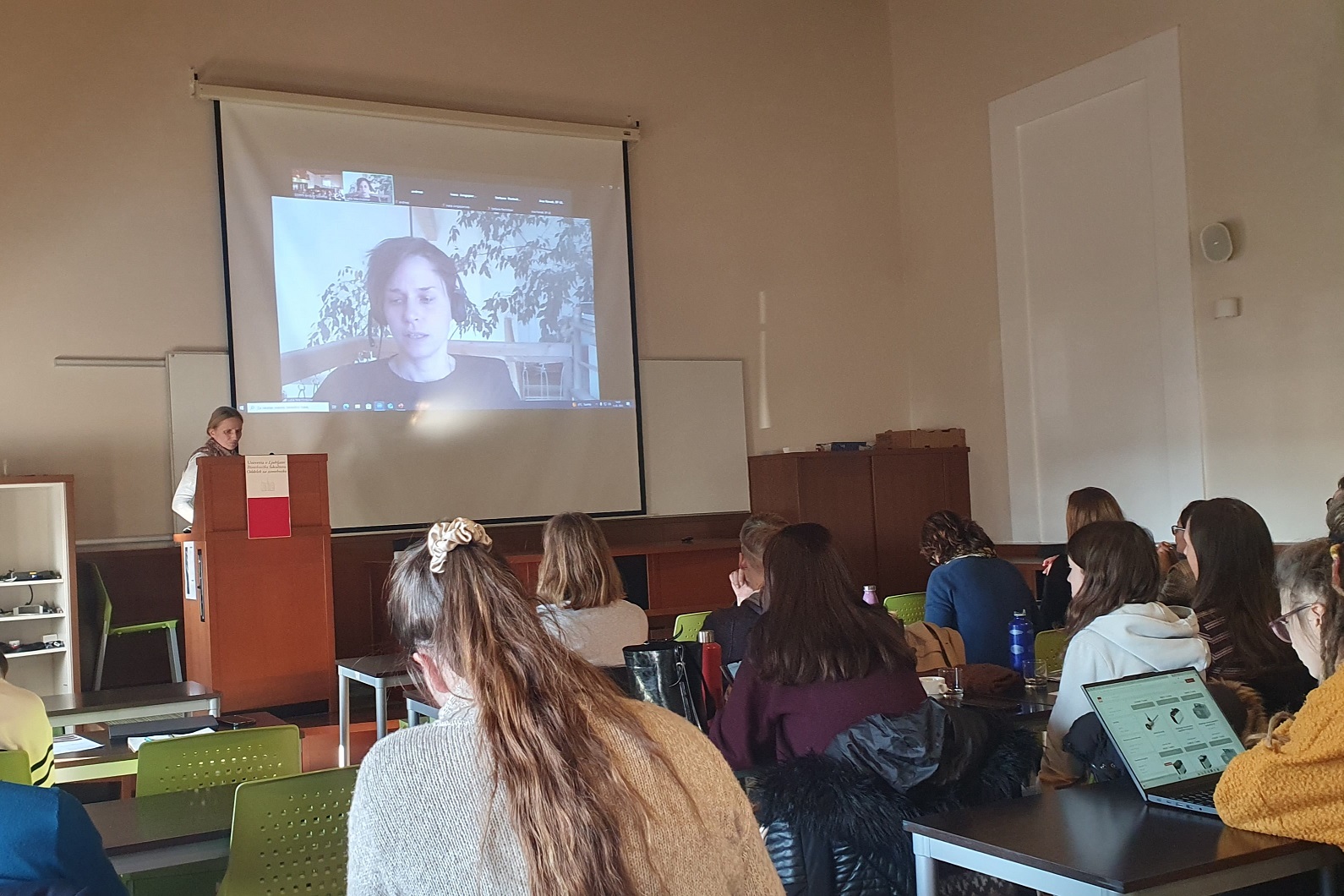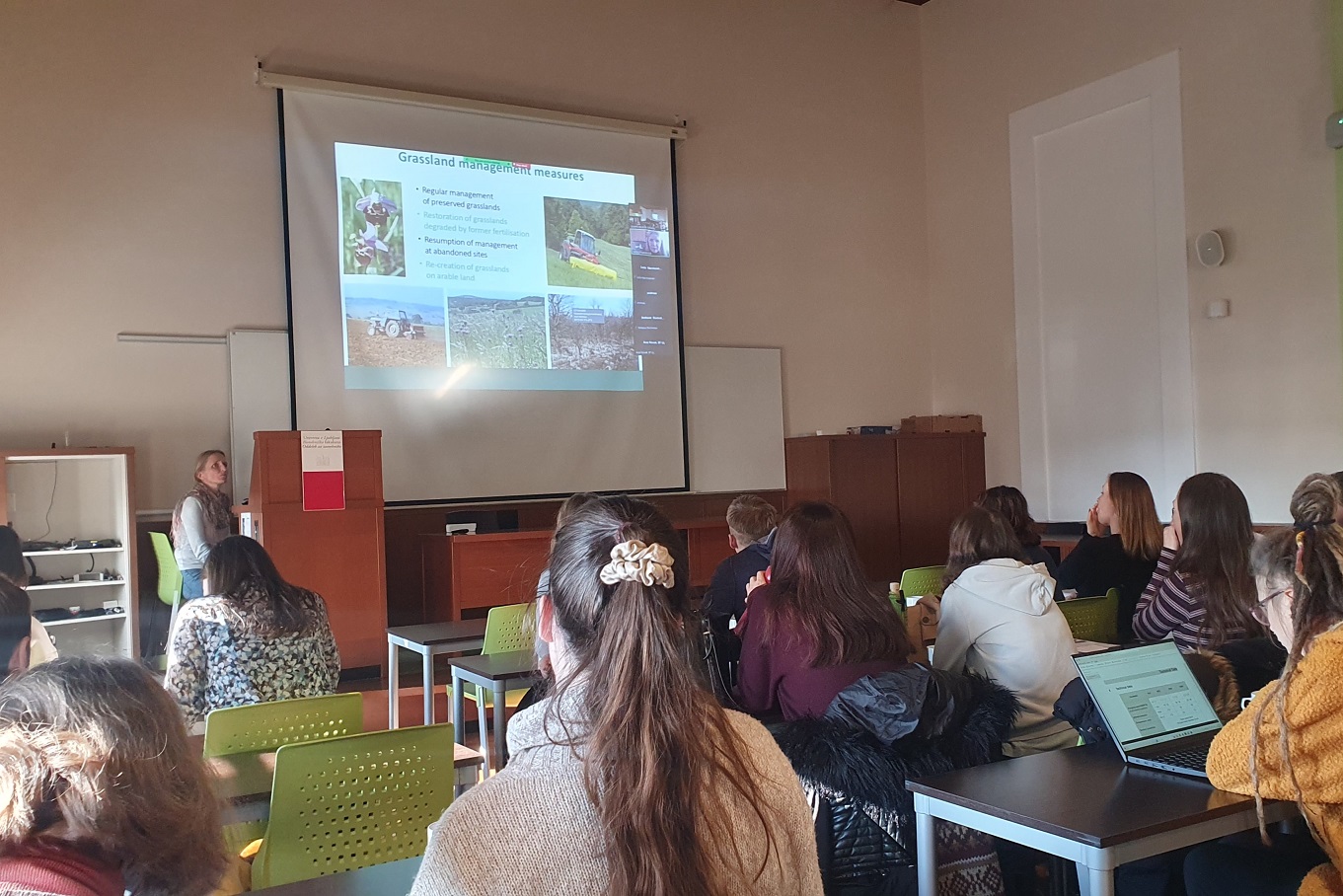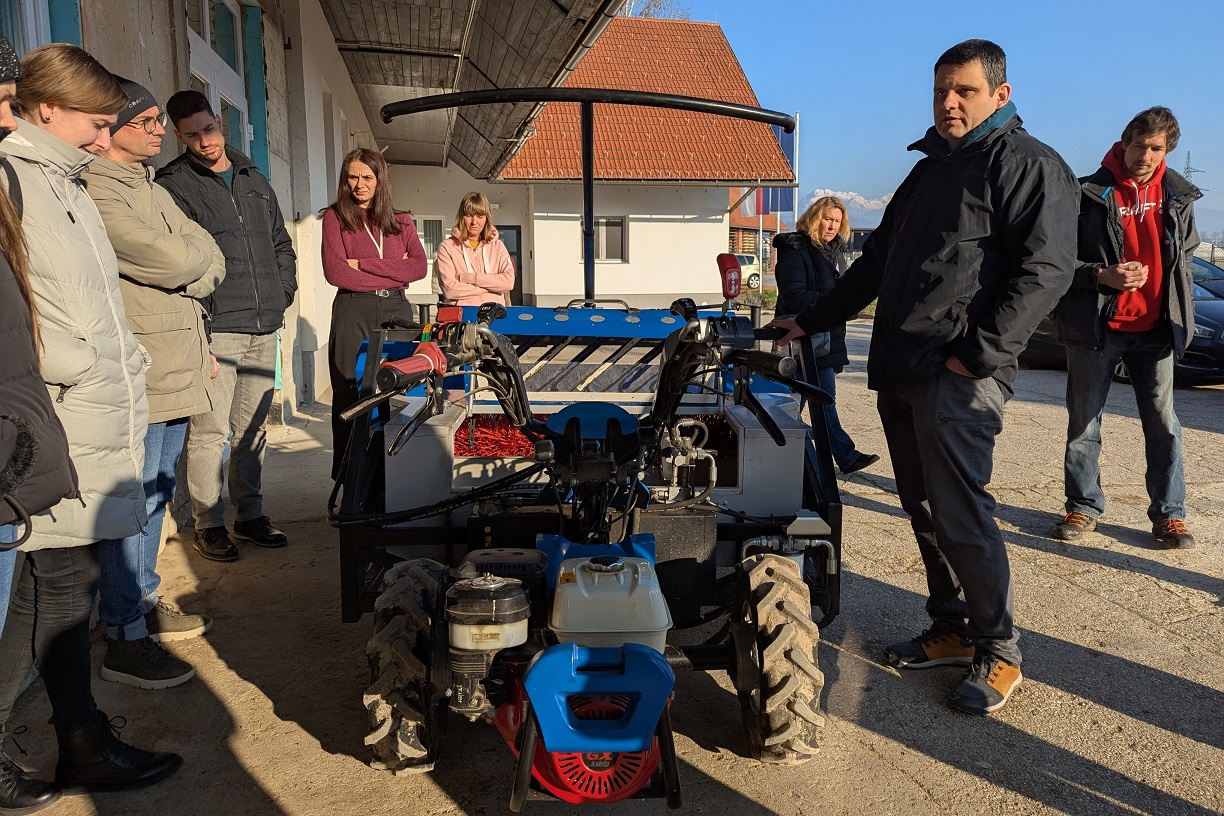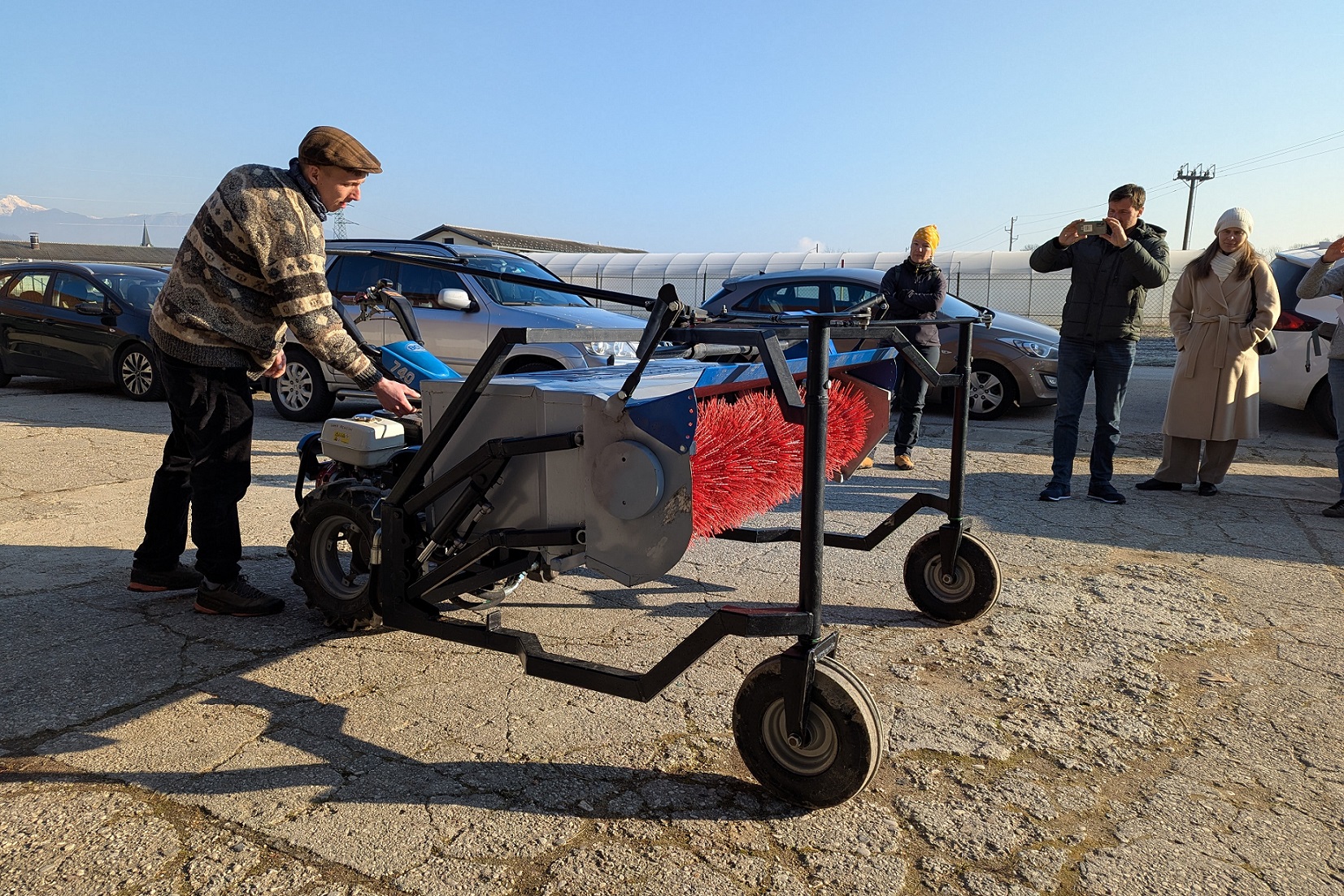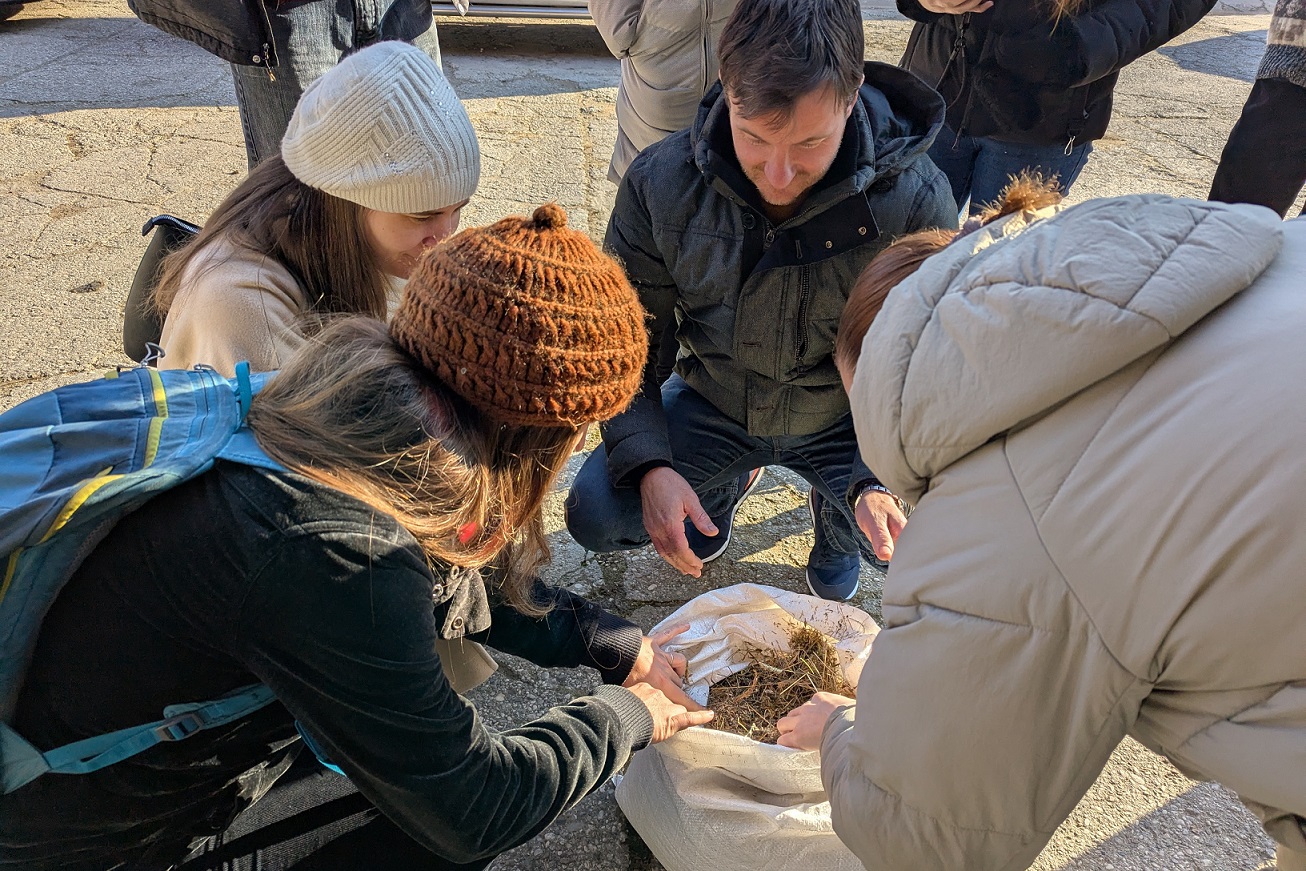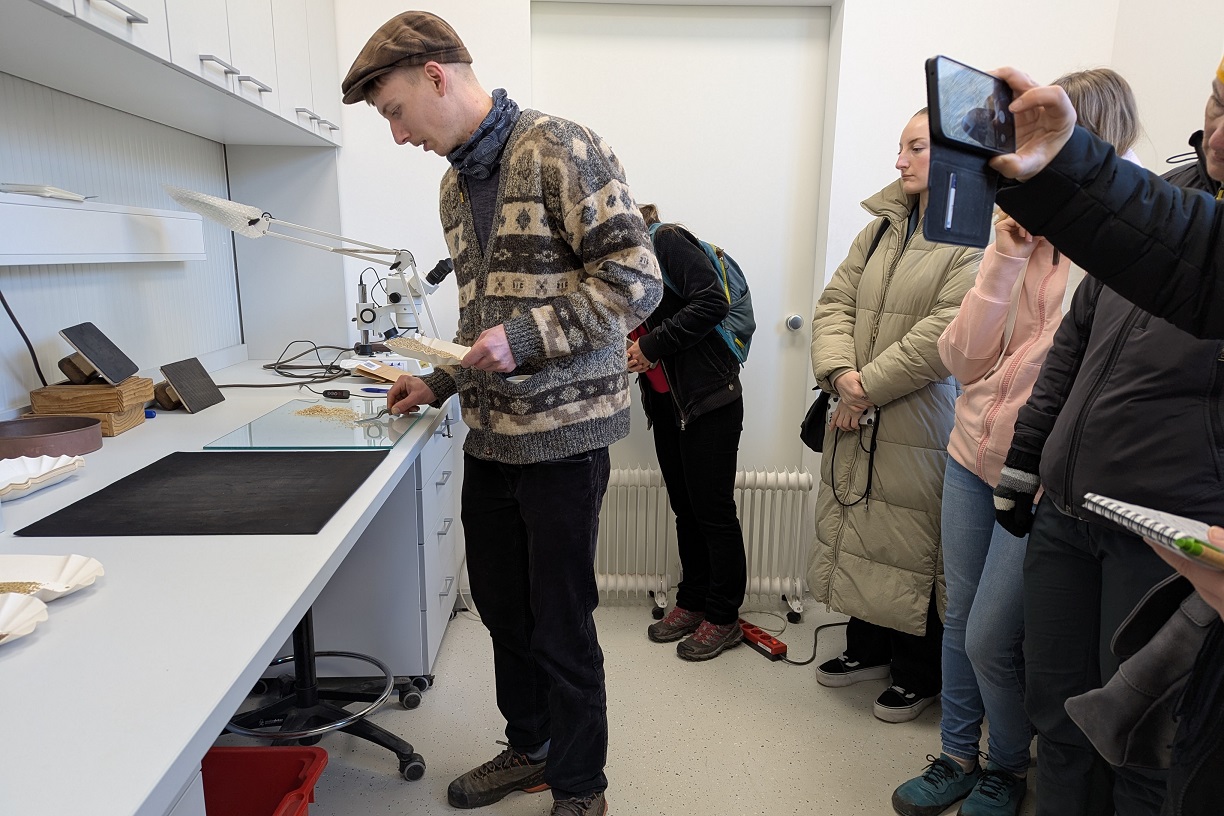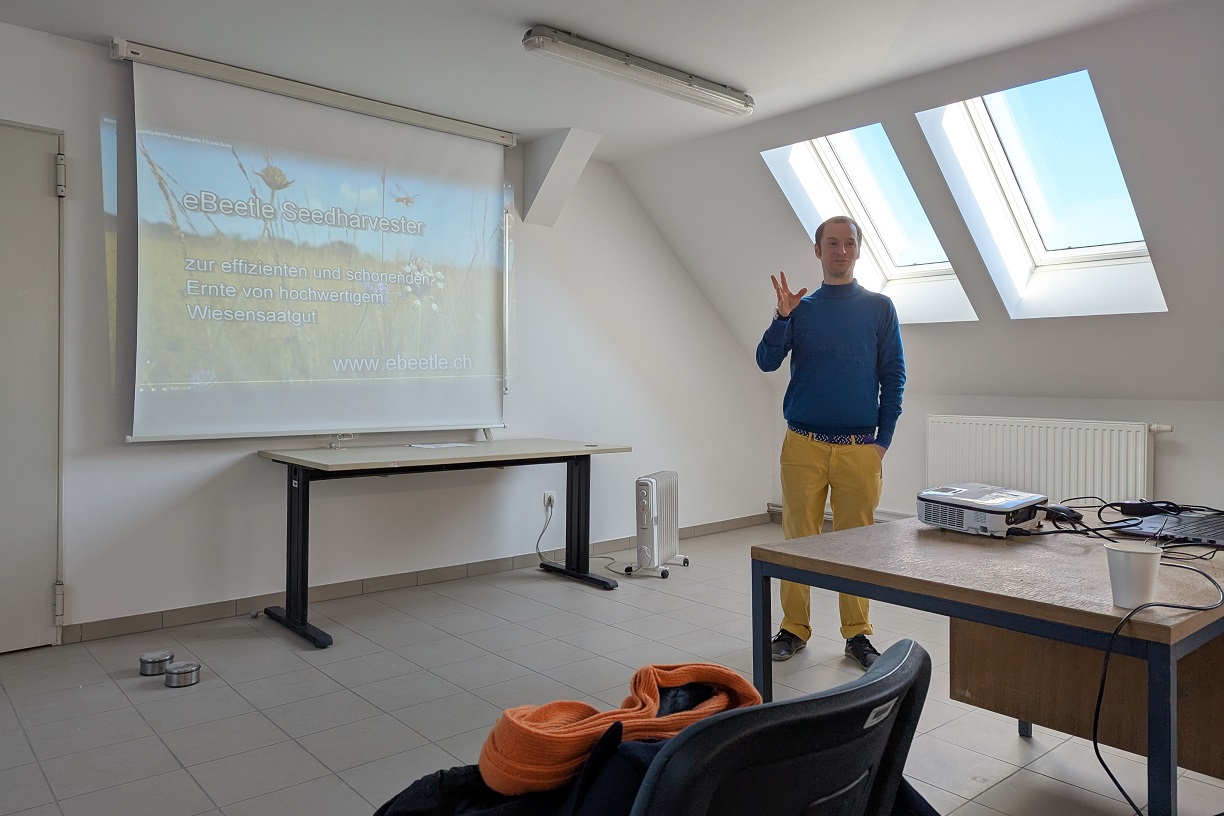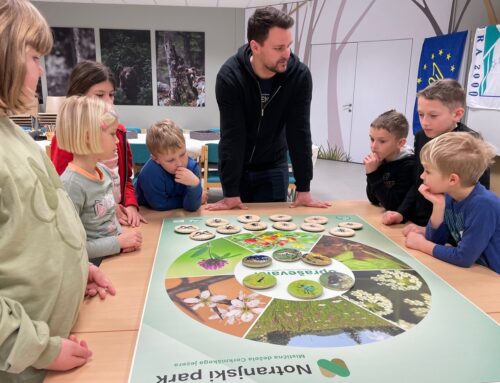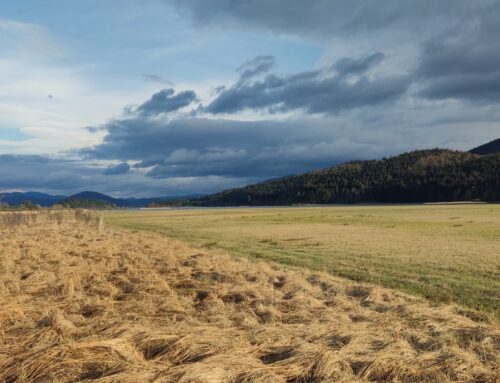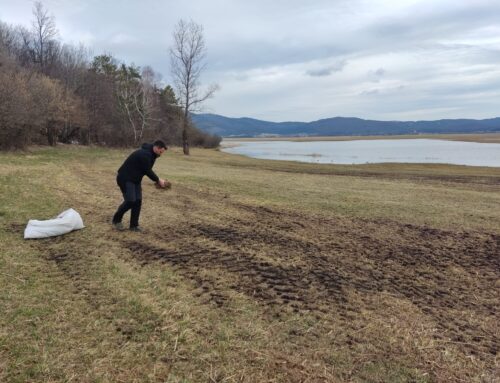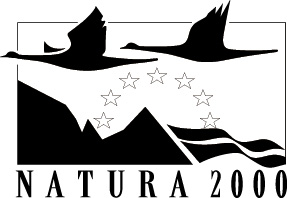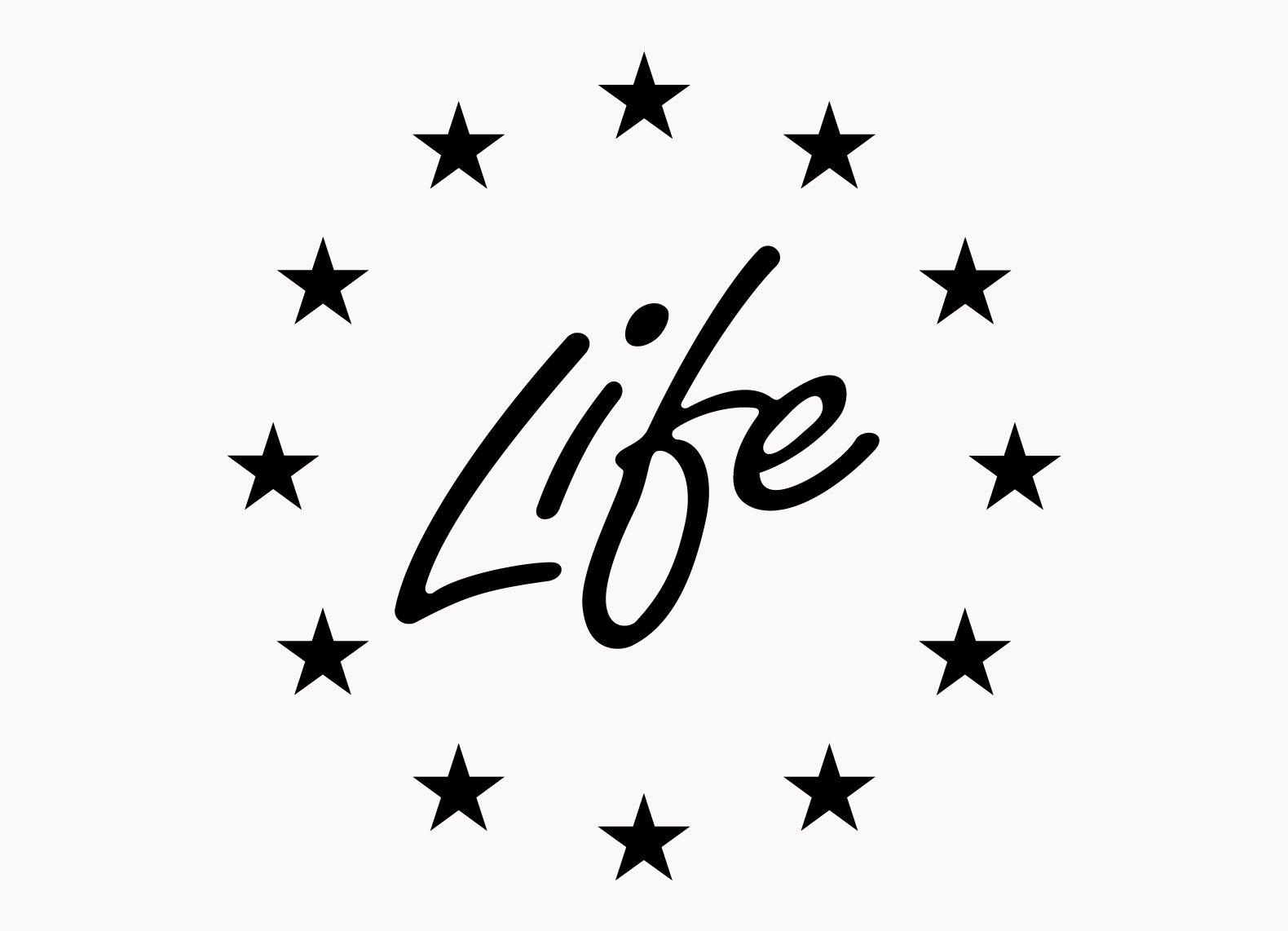On 4 and 5 February 2025, DOPPS and Biotechnical Faculty of the University of Ljubljana organised a two-day event on the production of native wild plant seed material in Slovenia and its use for the restoration of degraded grassland areas, entitled »Laying the foundations: Initiating native seed production in Slovenia«. On the first day, the event took place at the Department of Animal Science of Biotechnical Faculty in Rodica, and on the second day it took place at the Jablje Infrastructure Centre, a unit of the Agricultural Institute of Slovenia.
Slovenia does not currently have an established production of native grassland seed material. Therefore, interested customers can only buy some commercial seed mixtures from other countries. These are not suitable for our region, mainly because of their inappropriate species composition, which can have a number of adverse consequences for our grasslands. The LIFE FOR SEEDS project is primarily dealing with the establishment of a seed bank of wild plant species from three important, but threatened grassland habitat types, and with the restoration of grasslands of these three habitat types with the seed material from well-preserved grasslands of the same type. However, we would also very much like to see the long-term establishment of systematic production of indigenous seed material, suitable for the Slovenian environment. Hence, DOPPS and Biotechnical Faculty of the University of Ljubljana, with the support of Agricultural Institute of Slovenia, held the above-mentioned workshop as a first step in this direction.
On the first day, Staš Miljuš and Polona Božič from DOPPS opened the workshop with a presentation on the situation regarding grassland restoration and native seed production in Slovenia. The rest of the day was devoted to sharing the experience of the colleagues from other European countries on grassland restoration and seed production. The first presentation from abroad was given by Dr. Daniel Slodowicz from the Swiss company HoloSem, followed by presentations by Mag. Luzia Marchsteiner from the Austrian association REWISA, Dr. Ivana Jongepierová from the Nature Conservation Agency of the Czech Republic, and Dr. Andreas Zehm from the Bavarian State Ministry of the Environment and Consumer Protection.
On the second day of the workshop, colleagues from the LIFE FOR SEEDS project from Agricultural Institute of Slovenia presented and demonstrated part of the seed handling process – from the demonstration of brush harvester used to collect seed mixtures for grassland restoration, to the processing of seed collections of individual species by hand, using various tools and sieves, and seed cleaning machines, to the storage of cleaned seed collections in the newly established seed bank of wild plant species within the LIFE FOR SEEDS project. Additionally, Dr. Daniel Slodowicz gave a more detailed presentation of the »eBeetle« brush harvester, developed by HoloSem for the purpose of collecting seed mixtures.
Many representatives from a wide range of institutions attended our workshop, who showed a great deal of interest, asking many questions and provoking interesting discussions on both the first and the second day of the workshop. We would like to take this opportunity to thank them for the interest they have shown in our technical and research work in the fields of grassland restoration and the establishment of seed bank for our native grassland plants.
The event was organised within the ULTRA project, and was co-funded by the Republic of Slovenia, the Ministry of Higher Education, Science and Innovation, and the European Union – NextGenerationEU.


